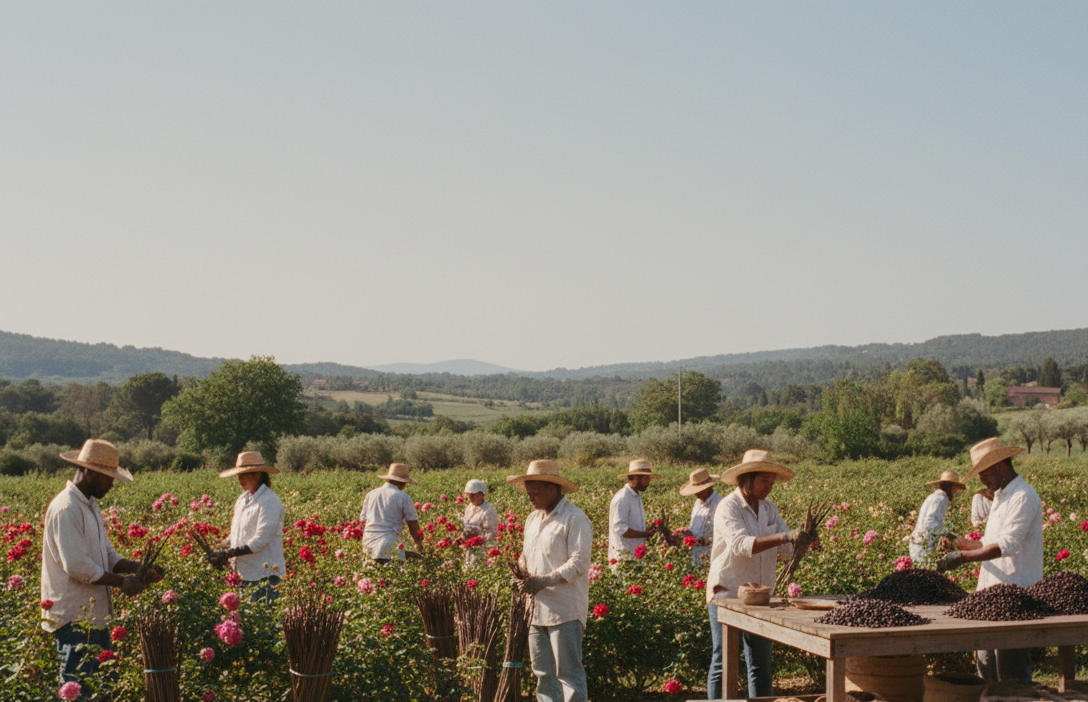Who Invented Perfume & When Was Perfume Invented? A Complete History
Perfume has mesmerised people for millennia. Here’s the definitive guide to when perfumery began, who the first recorded perfumer was, and how scent evolved into today’s luxury creations.

H2 — What Do We Mean by “Invented” Perfume?
People have used aromatics for over 4,000 years—burning resins, infusing oils, and scenting skin and textiles. But perfumery as a craft involves deliberate extraction, blending, and fixation of aromas to create a composed fragrance. While many cultures shaped this craft, the earliest recorded perfumer is Tapputi of ancient Mesopotamia (c. 1200 BCE), noted for methods akin to early chemistry, including filtration and distillation.
H3 — Ancient Aromatics: Mesopotamia & Egypt
In Mesopotamia and Egypt, aromatics were entwined with ritual, medicine, and cosmetics. Incense like frankincense and myrrh perfumed temples; scented unguents conditioned skin and hair. Egyptians developed techniques such as maceration and enfleurage precursors, storing precious oils in alabaster and glass.
H4 — Tapputi: The First Recorded Perfumer
Tapputi (also Tapputi-Belatekallim) appears on cuneiform tablets as an expert who refined floral and resinous materials using solvents and multiple distillations—placing her among the earliest known chemists. Her work signals a transition from raw aromatics to intentional, repeatable formulas.
H3 — Classical World: Greece & Rome
Greek artisans popularised liquid perfumes and everyday scented oils, while Romans turned perfume into a social staple—adorning baths, garments, and homes. Trade spread aromatic materials across the Mediterranean, setting the stage for broader European perfumery.
H4 — The Islamic Golden Age & Distillation
Between the 8th–13th centuries, scholars advanced steam distillation and codified recipes. Innovations around rose distillates and apparatus design made extractions cleaner and more efficient, expanding the perfumer’s palette and precision.
H2 — Renaissance to Enlightenment: Europe Refines the Craft
Knowledge from Al-Andalus and Mediterranean trade routes flowed into Italy and France. By the 16th century, European courts embraced perfume for fashion and hygiene. France’s glove-makers (gantiers-parfumeurs) helped establish Grasse as a fragrance hub, perfecting raw material preparation and blending practices that shaped modern perfumery.
H3 — Eau de Cologne & Everyday Freshness
In the 18th century, light, citrus-forward compositions—proto Eau de Cologne—offered a clean, invigorating style. This contrasted heavier unguents and paved the way for versatile, daytime wear that still influences contemporary men’s and women’s perfumery in the UK and beyond.
H2 — Modern Perfumery: Chemistry, Structure & Longevity
The 19th century brought organic chemistry and the discovery of aroma molecules (e.g., coumarin, vanillin), enabling creative accords not limited by nature’s yield. Perfumers formalised structures built on top, heart, and base notes—balancing radiance, character, and long-lasting drydowns prized by UK perfume lovers.
H3 — How Notes Work (Top, Heart, Base)
- Top notes: The first impression—often citrus, aromatic herbs, or aldehydes—setting freshness and brightness.
- Heart notes: Florals, spices, fruits forming the signature; they bloom as the top fades.
- Base notes: Woods, musks, resins, and amber facets anchor the fragrance and enhance longevity.
H4 — Extraction & Creation Today
Modern perfumery employs steam and fractional distillation, solvent and CO₂ extraction, and headspace analysis to capture elusive aromas. The result: precise, stable, and expressive compositions suitable for daily wear and special occasions.
H2 — Timeline: Key Milestones in Perfume History
- c. 3000–2000 BCE: Egypt perfects scented oils and ritual incense.
- c. 1200 BCE: Tapputi in Mesopotamia—the earliest recorded perfumer.
- Classical Era: Greek & Roman adoption of scented oils and public bathing culture.
- 8th–13th c.: Islamic Golden Age advances distillation and aromatic science.
- Renaissance: Italy and France refine craft; Grasse emerges as a key centre.
- 18th c.: Rise of light, citrus Eau de Cologne profiles.
- 19th–20th c.: Organic chemistry, synthetics, and iconic fragrance families.
- 21st c.: Artisanal, luxury, and performance-focused perfumes flourish.
H2 — FAQs: Your Perfume Origins Questions Answered
- H3 — Who is the first recorded perfumer?
- Tapputi of ancient Mesopotamia (c. 1200 BCE) is the earliest recorded perfumer, renowned for proto-chemical techniques.
- H3 — When was perfume invented?
- Aromatic rituals predate recorded history, but written evidence of perfumery appears in Mesopotamia and Egypt; Tapputi’s work is a landmark.
- H3 — What made modern perfumery possible?
- Advances in distillation, global trade in raw materials, and 19th-century chemistry expanded the perfumer’s toolkit and improved longevity and consistency.
- H3 — What makes a perfume long-lasting?
- Balanced formulation with substantive base notes (woods, musks, ambers), appropriate concentration, and quality raw materials.
H2 — Explore Luxury Fragrances in the UK
Ready to experience modern luxury perfumery? Discover our meticulously crafted collections:
H6 — A Note on Quality & Craft
Every bottle from The Perfume Stash London embodies our commitment to refined materials, elegant structures, and a long-lasting signature designed for UK lifestyles.
Experience the art of modern luxury perfume. Explore our Women’s Collection and Men’s Collection today.



